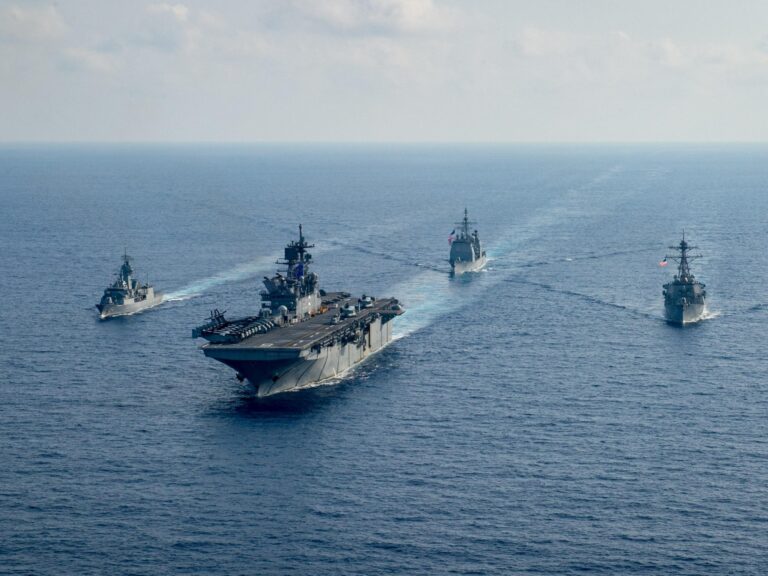Australia will strengthen its missile defense capabilities as China’s test launch of an intercontinental ballistic missile (ICBM) in the South Pacific raises “grave concerns” and the Asia-Pacific region enters the “missile age.”
Australia’s Defense Industry Minister Pat Conroy said in a speech on Wednesday that Australia plans to strengthen its missile defense and long-range strike capabilities and will work with security partners the United States, Japan and South Korea on issues of regional stability. Ta.
“Why do we need more missiles? Strategic competition between the US and China is a key feature of Australia’s security environment,” Mr Conroy told the National Press Club in Canberra.
“This competition is most intense in our region, the Indo-Pacific region,” he said.
Conroy said the region is on the cusp of a new missile era, and missiles are also “instruments of coercion.”
He also noted that China test-fired an intercontinental ballistic missile (ICBM) in September, flying more than 11,000 kilometers before landing in the Pacific Ocean northeast of Australia.
“In light of the Treaty of Rarotonga, which stipulates that the Pacific Ocean should be a nuclear-weapon-free zone, he expressed grave concerns about ballistic missile tests, particularly their entry into the South Pacific,” he said in response to questions from reporters.
He added that Australia plans to deploy SM-6 missiles on naval destroyers for ballistic missile defense.
Australia is among the Asia-Pacific countries that have dramatically increased defense spending.
In April, Australia announced a defense strategy that envisages a sharp increase in spending to counter its vulnerability to adversaries that disrupt trade or block access to vital air and sea routes.
In addition to rapidly developing its surface fleet, Australia plans to deploy stealth nuclear-powered submarines under a tripartite agreement with the United States and United Kingdom known as AUKUS.
Defense Minister Richard Marles said Australia has unveiled a “blueprint” for rapid domestic missile production and the acquisition of the country’s “long-range strike” capabilities.
Earlier this month, Australia announced a 7 billion Australian dollar ($4.58 billion) contract with the United States to acquire SM-2 IIIC and Raytheon SM-6 long-range missiles for its navy.
Australia previously announced it would spend A$74 billion ($49 billion) over the next 10 years on missile acquisition and missile defense, including a new domestic manufacturer, the Australian Guided Weapons and Explosives Company. It also includes A$21 billion ($13.7 billion) for funding. ability.
“We must demonstrate to potential adversaries that hostilities against Australia will not succeed and cannot be sustained if the conflict is prolonged,” Mr Conroy said in a speech.
He also said: “In a world marked by supply chain disruption and strategic vulnerability, Australia needs to not only acquire more missiles, but also build more missiles at home.”
Australia, in partnership with Lockheed Martin, will spend A$316 million ($206 million) to establish local manufacturing of the Guided Multiple Launch Rocket System (GMLRS), making it available for export from 2029. The plan is to produce deployable surface-to-ground weapons. The plant will be able to produce 4,000 GMLRS a year, or a quarter of current global production, Conroy said.
Defense Minister Marles said the facility established to produce GMLRS “will also have the capacity to manufacture a variety of weapons and provide production capacity to trusted partners in the region and beyond.”
France’s Thales will also set up Australian manufacturing of the 155mm M795 shell used in howitzers at an Australian government-owned military facility in the small city of Benalla in Victoria state. It will be the first purpose-built forge outside the United States, and production is expected to begin in 2028, with production capacity expected to grow to 100,000 rounds per year.
In August, Australia announced that it would jointly manufacture long-range naval strike missiles and joint strike missiles with Norway’s Kongsberg Defense and Aerospace at its only base outside Norway, the city of Newcastle on Australia’s east coast.

